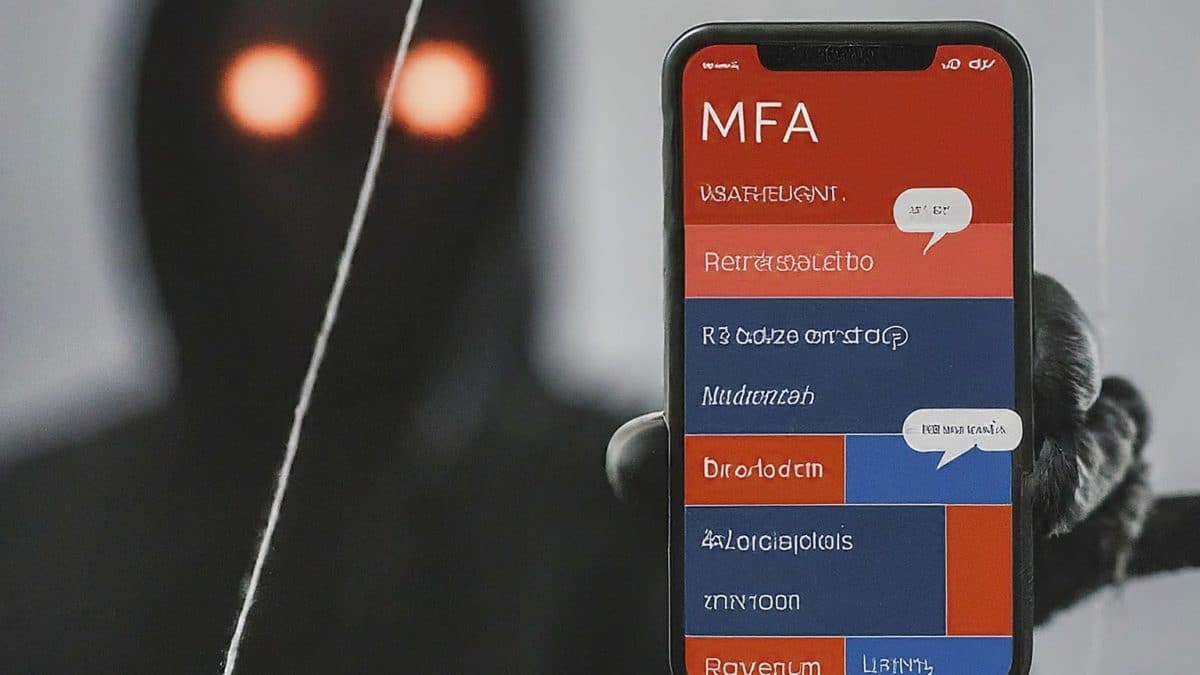Multi-factor authentication (MFA) has become a critical defense mechanism against cyberattacks. It adds an extra layer of security by requiring not just your password, but also a secondary verification factor, like a code from your phone or a fingerprint scan.
However, cybercriminals are relentless in their pursuit of new tactics. MFA bombing, a technique that aims to overwhelm you with MFA prompts until you approve one out of fatigue, is a growing concern.
MFA Bombing 101: How Does it Work?
Imagine this: You’re engrossed in work when you receive a notification on your phone requesting MFA approval for a login attempt. Knowing it might be legitimate, you approve**.
But shortly after, another notification pops up, then another, and another**. Each one requests MFA approval for a login attempt from an unknown device. Confused and feeling overwhelmed**, you might accidentally approve one of these requests, unwittingly granting access to attackers.
This is the essence of MFA bombing. Here’s a breakdown of its mechanics:
- Brute-Force Password Attacks: Attackers first attempt to crack your password** using automated tools or stolen credentials from past breaches.
- MFA Bombardment: Once they have your password, attackers launch a rapid series of login attempts** using automated scripts**.
- Fatigue and Error: The constant stream of MFA notifications is designed to exhaust and confuse you**, increasing the chances of you accidentally approving a malicious login attempt.
Beyond Logins: The Expanding Reach of MFA Bombing
MFA bombing isn’t limited to traditional login attempts**. Attackers might also target:
- Financial Transactions: Imagine receiving a flurry of MFA requests for unauthorized transfers from your bank account.
- Account Recovery: Attackers might bombard you with MFA requests during account recovery attempts**, potentially granting them access to change your password and lock you out.
Evolving Tactics: The “Social Engineering” Twist
MFA bombing is also evolving**. Some attackers might combine it with social engineering. For instance, they might call you pretending to be customer support**, claiming they detected suspicious activity and need your help “verifying” your account.
Staying Ahead of the Curve: How to Defend Against MFA Bombing
While MFA bombing poses a challenge, there are steps you can take to fortify your defenses**:
- Strong Passwords: The foundation of security starts with unique and complex passwords for all your accounts. Consider a password manager to create and store strong passwords.
- Be Vigilant: Don’t approve MFA requests unless you recognize the login attempt. If you see a barrage of notifications, immediately contact the relevant service provider.
- Register Trusted Devices: Whenever possible, register trusted devices for MFA. This can limit the number of devices from which login attempts can originate.
- MFA with Biometrics: If available, opt for MFA methods like fingerprint scans or facial recognition**, which are more difficult to bypass than codes received via SMS.
- Security Awareness Training: Educate yourself and your employees about MFA bombing and social engineering tactics**. Knowledge is power in the fight against cybercrime.
MFA Fatigue: A Collective Responsibility
MFA bombing is a serious threat**, but it doesn’t render MFA obsolete. By combining strong passwords, vigilance, and appropriate MFA methods**, we can significantly reduce the risk of falling victim to this tactic.
Staying informed, implementing security best practices, and educating others are collective responsibilities in the ever-evolving cybersecurity landscape.
Don’t let fatigue win! Strengthen your defenses today!
#MFA #cybersecurity #phishing #socialengineering #passwordsecurity #securityawareness #twofactorauthentication #fatigue #dataprivacy






